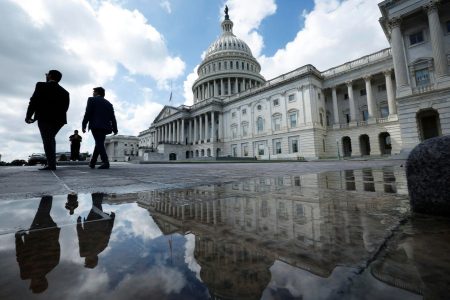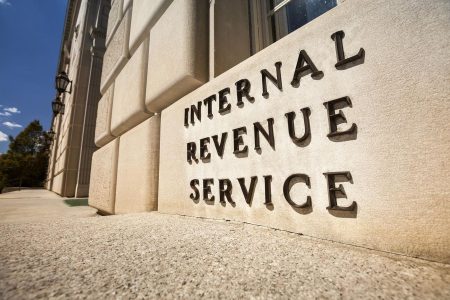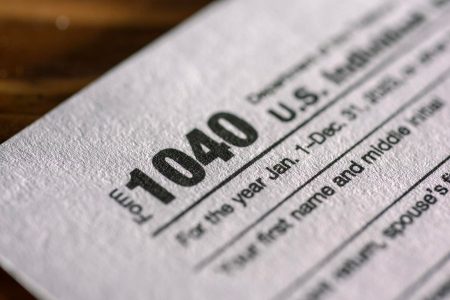After a detailed review, the IRS says it plans to deny tens of thousands of improper high-risk Employee Retention Credit (ERC) claims. IRS Commissioner Danny Werfel said the extra looks “confirmed widespread concerns about a large number of improper claims.”
According to the IRS, the agency has investigated one million claims worth about $86 billion—a review involving months of digitizing information and analyzing data since last September. As a result, the IRS identified between 10% and 20% of claims as high-risk, showing clear signs of being erroneous claims. Tens of thousands of these will be denied in the weeks ahead, with Werfel saying, “We will now use this information to deny billions of dollars in clearly improper claims.”
The IRS estimates that an additional 60% to 70% of the claims show what the agency calls “an unacceptable level of risk.” Businesses in that category will be subject to more analysis as the IRS gathers more information.
“This is one of the most complex credits the IRS has administered, and we continue to ask taxpayers for patience as we unravel this complex process,” Werfel added. “Ultimately, this period will help us protect taxpayers against improper payouts that flooded the system and get checks to those truly eligible.”
ERC Relief
The ERC program was intended to assist eligible employers in keeping the lights on in their businesses. Eligible employers are those that paid qualified wages to some or all employees after March 12, 2020, and before January 1, 2022. Typically, to qualify, you must demonstrate that your business was shut down by a government order due to the pandemic during 2020 or the first three calendar quarters of 2021 or that you experienced a specific decline in gross receipts during the eligibility periods during 2020 or the first three calendar quarters of 2021. Some businesses may also qualify as recovery startup businesses for the third or fourth quarters of 2021.
The credit is 50% of up to $10,000 in wages, meaning it can be as high as $5,000 per employee in 2020 and as high as $21,000 per employee in 2021.
Businesses have filed 3.6 million claims for the ERC, with the cost of the program hitting more than $232 billion.
(The IRS created a chart to help businesses or other organizations decide if they qualify for the ERC.)
Moratorium
In September of last year, citing “rising concerns about a flood of improper ERC claims,” the IRS announced a moratorium on processing new ERC claims. At the time, the agency said the pause was intended to protect honest small business owners from scams.
Since then, the IRS has continued to see ERC claims come in at the rate of more than 17,000 a week. According to the IRS, the ERC inventory currently stands at 1.4 million.
As of now, the IRS plans to continue the moratorium. Additionally, no claims submitted during the moratorium will be processed at this time.
“We decided to keep the post-September moratorium in place because we continue to be concerned about the substantial number of claims coming in so long after the pandemic,” Werfel said.
He continued, “These claims are clogging the system for legitimate taxpayers. We worry that ending the moratorium might trigger a gold rush by aggressive marketers that could lead to a new round of improper claims, which would be a bad result for taxpayers or tax administration. We will use this time to consult with Congress and seek additional help from them on the ERC program, including potentially closing down new claims entirely and seeking an extension of the statute of limitations to allow the agency more time to pursue improper claims.”
Businesses Still Waiting
The emphasis on preventing fraud has meant that some small businesses are still waiting on legitimate claims. The IRS says that data suggests those numbers are low—between 10% and 20% of ERC claims.
The IRS is processing those claims with no eligibility warning signs received before the moratorium, and anticipates that some of the first payments in this group will go out later this summer. But don’t expect those payments to be made quickly—the IRS emphasized that, given the need for increased scrutiny, these payments will go out at a “dramatically slower pace than during the pandemic period.”
Adjustments
More claims will be paid later this summer following a final review. This additional review is needed, the agency says, because submissions may have calculation errors. For those claims with calculation errors, the amount claimed will be adjusted before payment.
The IRS also noted that generally, the oldest claims will be worked first.
Next Steps
The IRS says it has processed 28,000 claims worth $2.2 billion and disallowed more than 14,000 claims worth more than $1 billion.
Taxpayers who are waiting on legitimate claims do not need to take any action. That includes calling the IRS—the agency says not to bother since additional updates and information are generally unavailable for claims being processed.
“These complex claims take time, and the IRS remains deeply concerned about how many taxpayers have been misled and deluded by promoters into thinking they’re eligible for a big payday,” Werfel said. “People may think they are on safe ground, but many are simply not eligible under the law. The IRS continues to urge those with pending claims to use this period to review the guideline checklist on IRS.gov, talk to a legitimate tax professional rather than a promoter and use the special IRS withdrawal program when there’s an issue.”
Those employers who have submitted questionable claims may want to consider a withdrawal. Under the withdrawal option, employers who have filed an ERC claim but have not received a refund can withdraw their submission and avoid future repayment, interest, and penalties.
You can participate if all of the following apply:
- You claimed the ERC on an adjusted employment return (Forms 941-X, 943-X, 944-X, CT-1X);
- You filed the adjusted return only to claim the ERC and made no other adjustments;
- You want to withdraw the entire amount of their ERC claim; and
- The IRS has not paid the claim, or the IRS has paid the claim, but you haven’t cashed or deposited the refund check.
If you made any other changes on the adjusted employment tax return or only need to reduce your ERC claim and not withdraw it entirely, you can’t use the withdrawal process—you need to amend your return. (For more information, check out “Amending a return” (Q1 and Q2) on the ERC frequently asked questions page .)
Taxpayers who received an ERC check but haven’t cashed or deposited it can also use this process to withdraw the claim and return the check. The IRS will treat the claim as though the taxpayer never filed it, and no interest or penalties will apply.
To date, more than 4,800 entities have withdrawn $531 million of questionable ERC claims.
Voluntary Disclosure Program
In December of 2023, the IRS announced a voluntary disclosure program (VDP) for businesses that want to pay back the money they received after filing ERC claims in error. The program closed on March 22, 2024, after the IRS received over 2,600 applications with $1.09 billion of improper claims.
The IRS is considering reopening the VDP—with lesser benefits—for those with previously processed claims.
Letters and Investigations
Last year, the IRS also announced it was sending more than 20,000 letters to taxpayers notifying them that their ERC claims were disallowed. These letters targeted taxpayers the IRS believes are not eligible and who have applied for but have not yet received the credit.
The IRS has determined that more than 12,000 entities filed over 22,000 improper claims, resulting in $572 million in assessments. The initial round of letters covers tax year 2020, and the IRS says thousands more of these letters are planned in the coming months to address tax year 2021.
As of May 31, 2024, IRS Criminal Investigation has initiated 450 criminal cases, with potentially fraudulent claims worth nearly $7 billion. In all, 36 investigations have resulted in federal charges, with 16 investigations resulting in convictions and prison time—the average sentence was 25 months.
The IRS also has thousands of ERC claims currently under audit.
As for those suspected abusive tax promoters and preparers who improperly promoted ERC claims? The IRS says it has received hundreds of referrals and plans to continue related civil and criminal enforcement efforts to follow-up.
Be Careful
Werfel cautioned taxpayers to be wary of promoters who may continue to solicit ERC claims, saying, “Anyone applying for this credit needs to talk to a trusted tax professional and closely review the eligibility requirements, not someone playing fast and loose and trying to make a fast buck off well-meaning taxpayers.”
Read the full article here
















